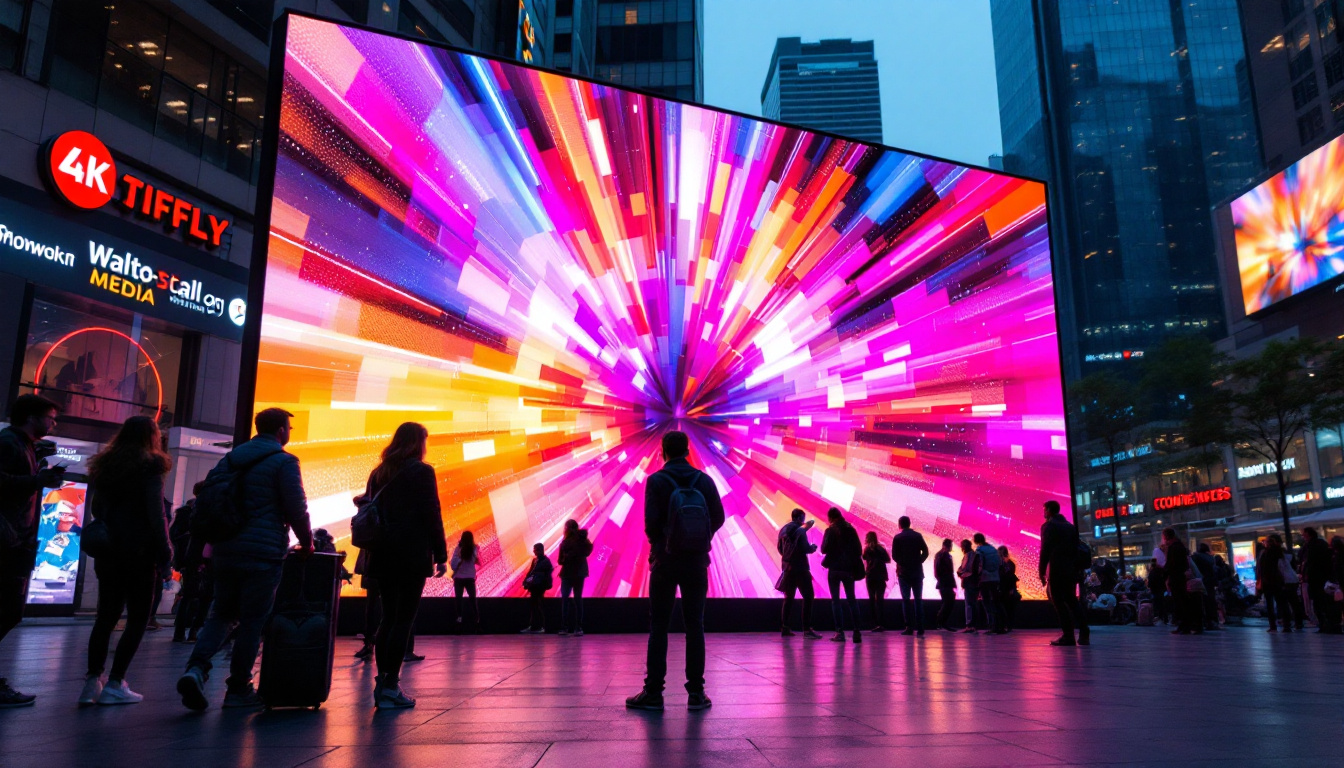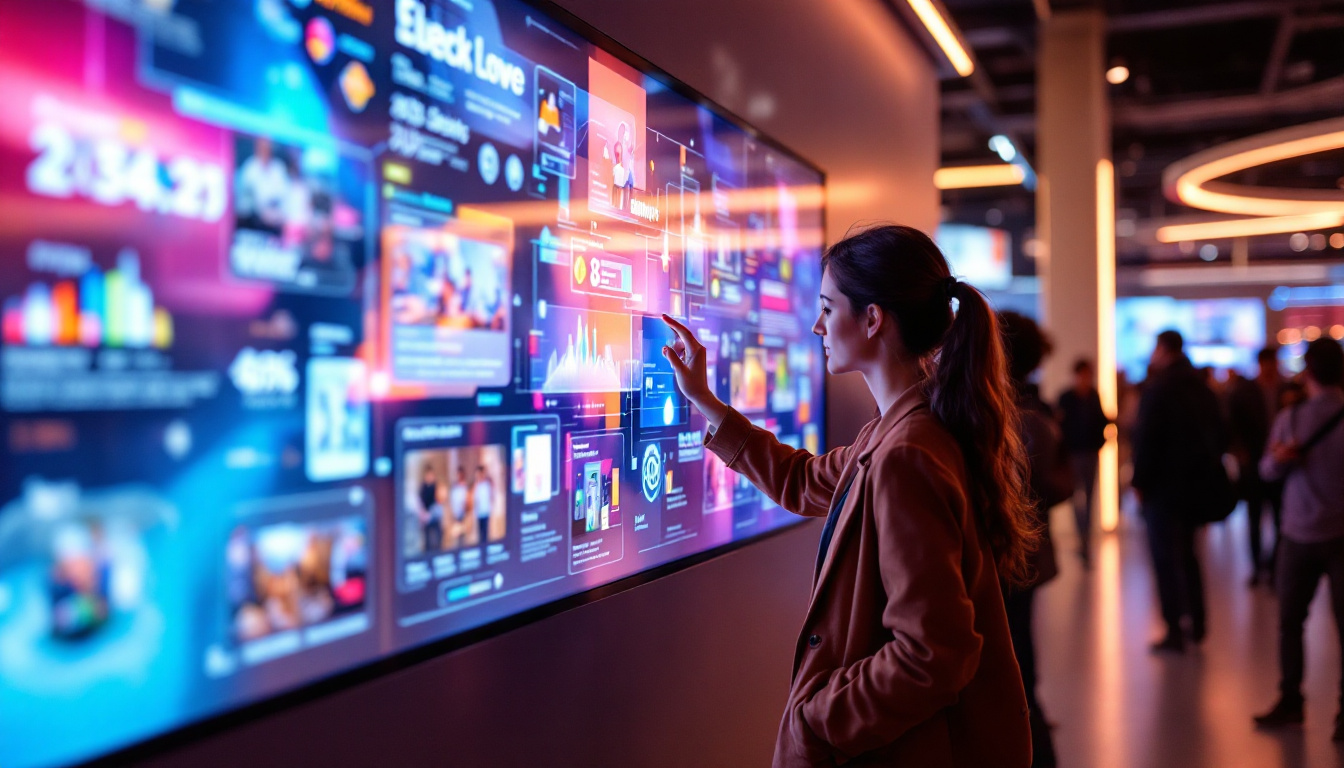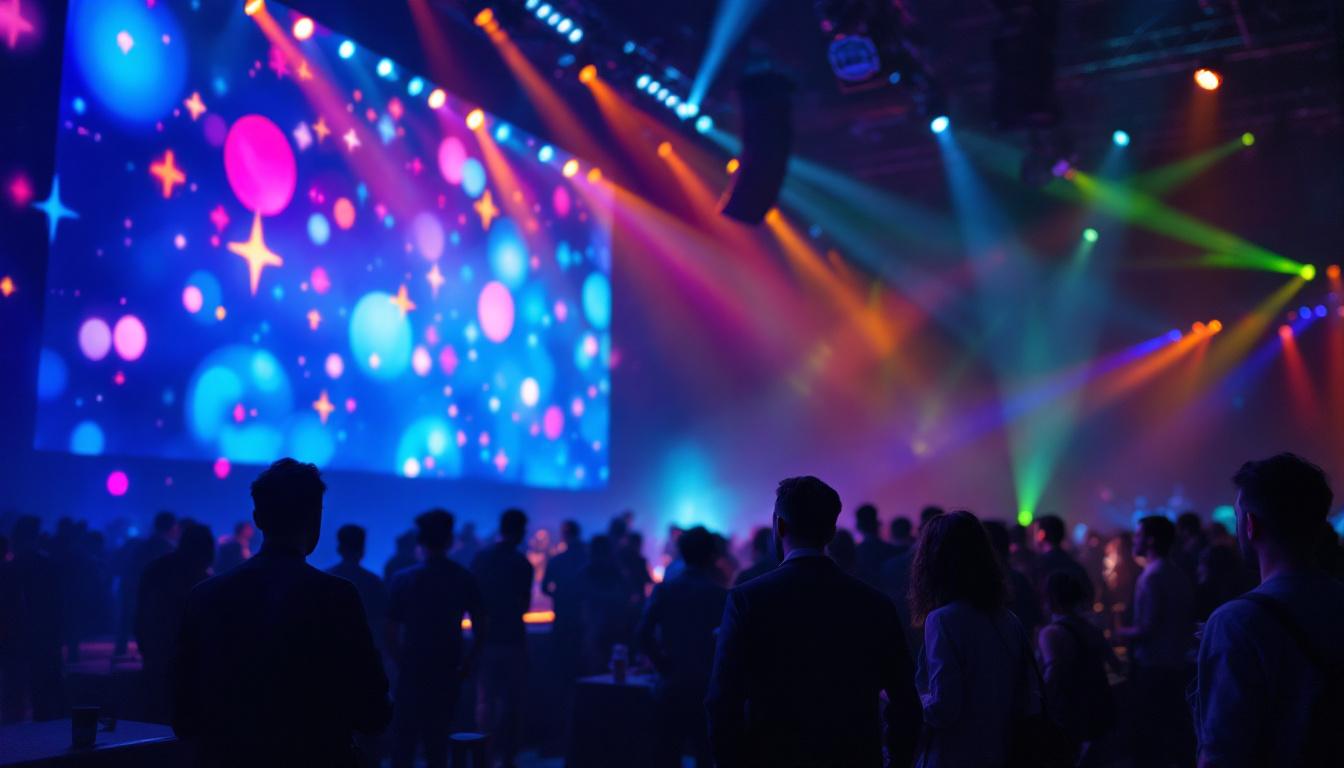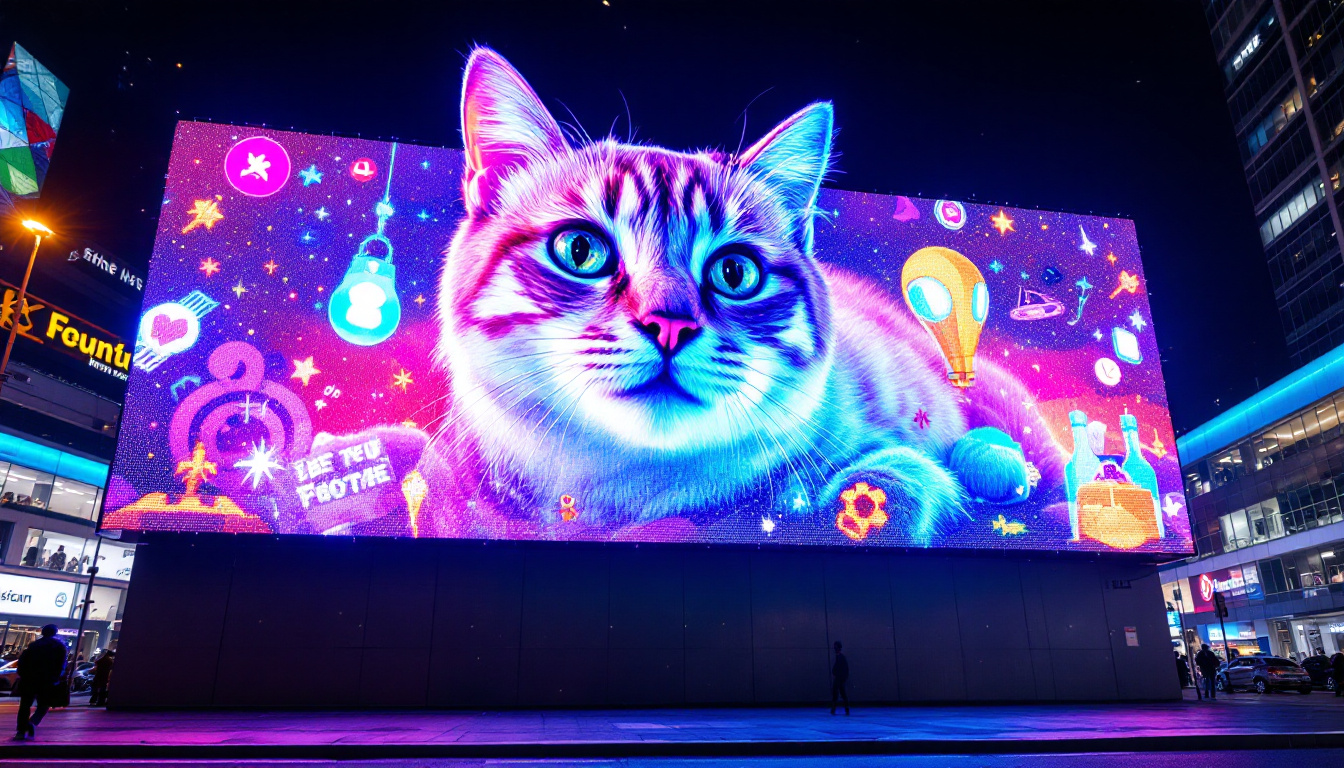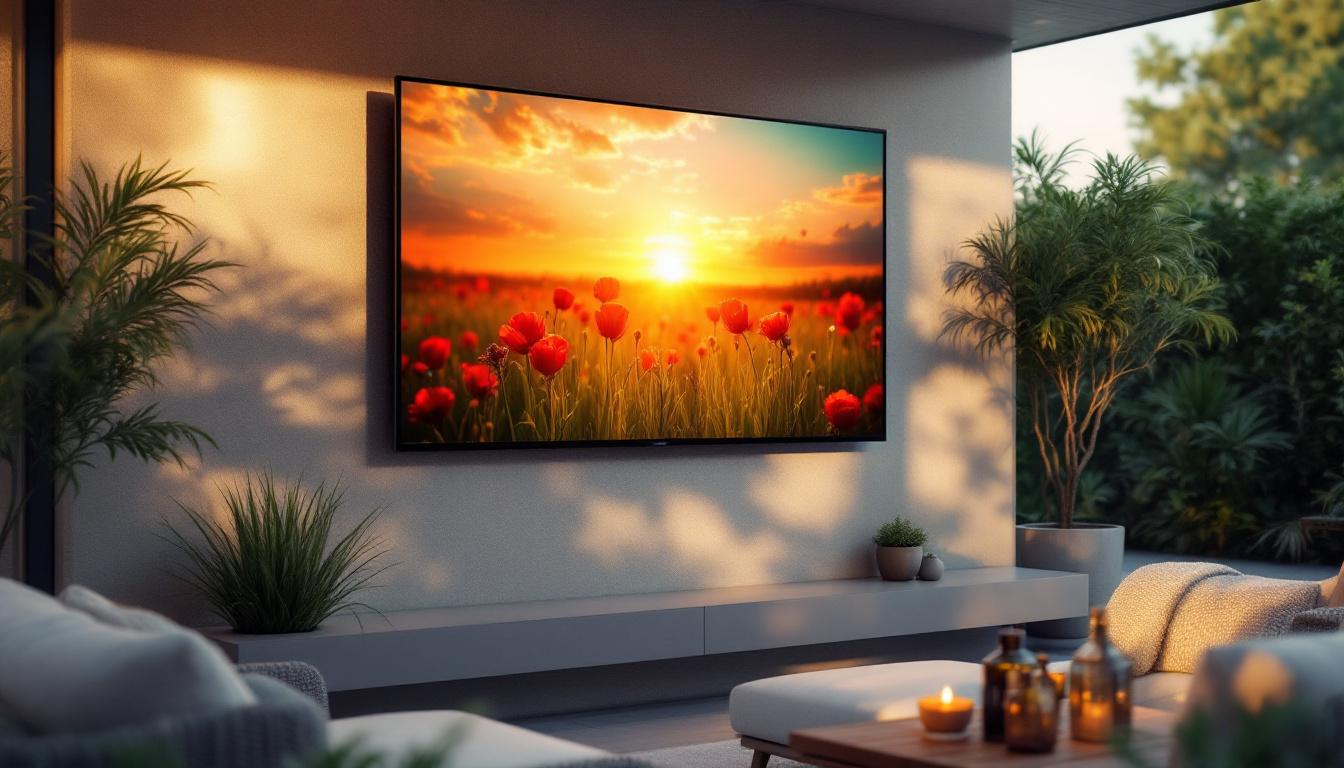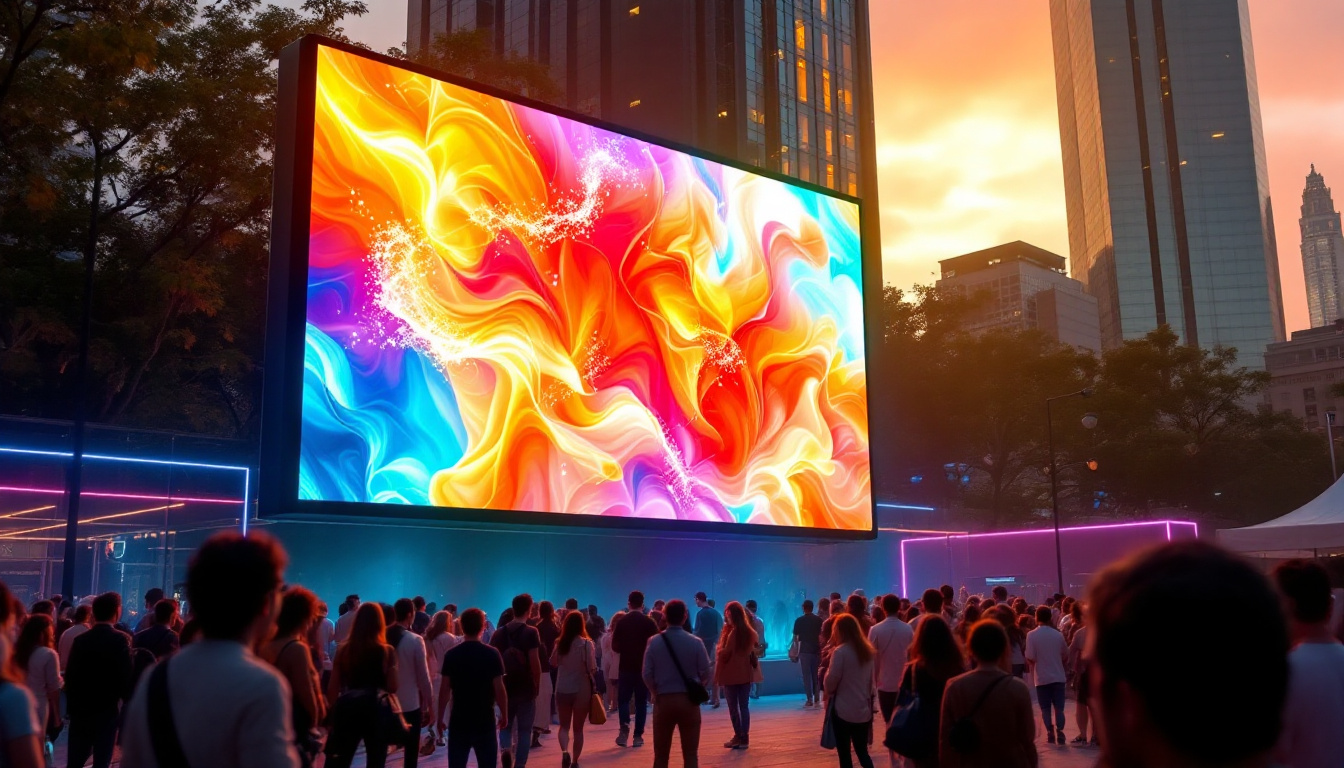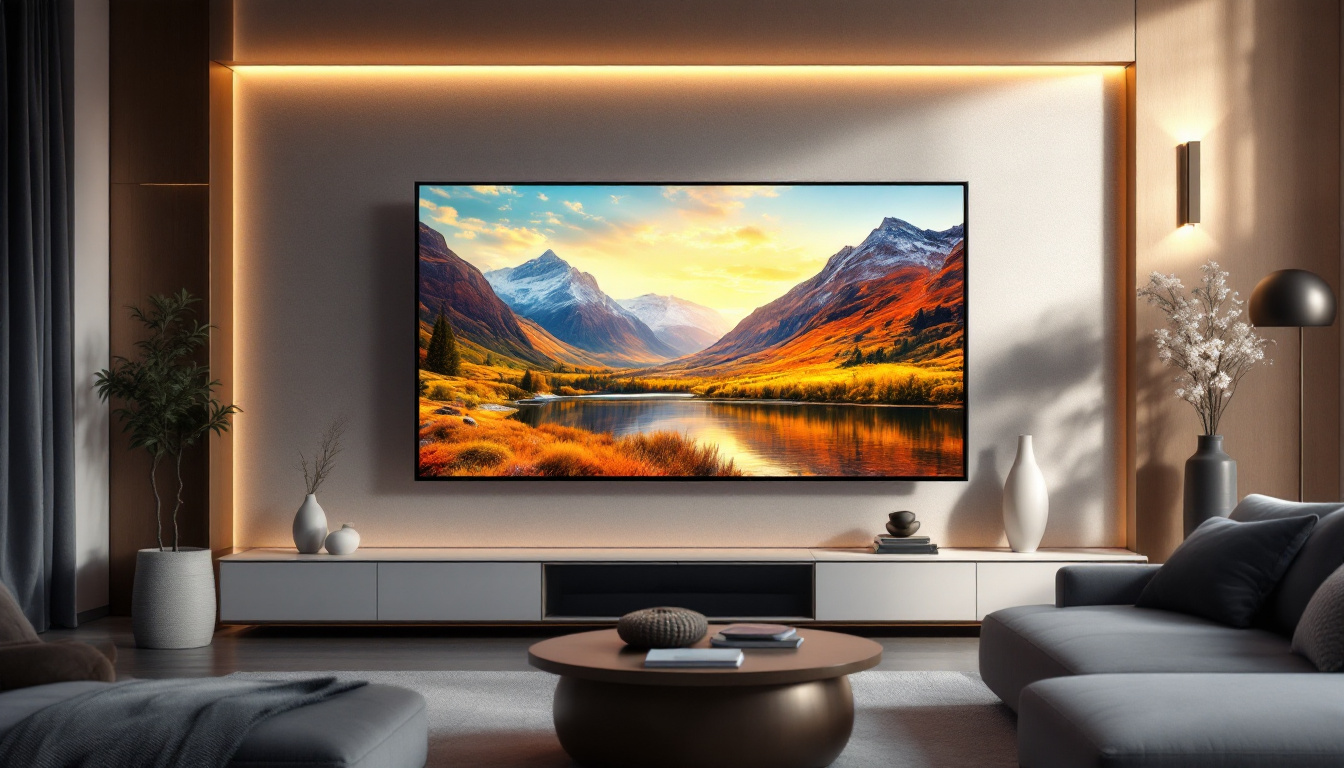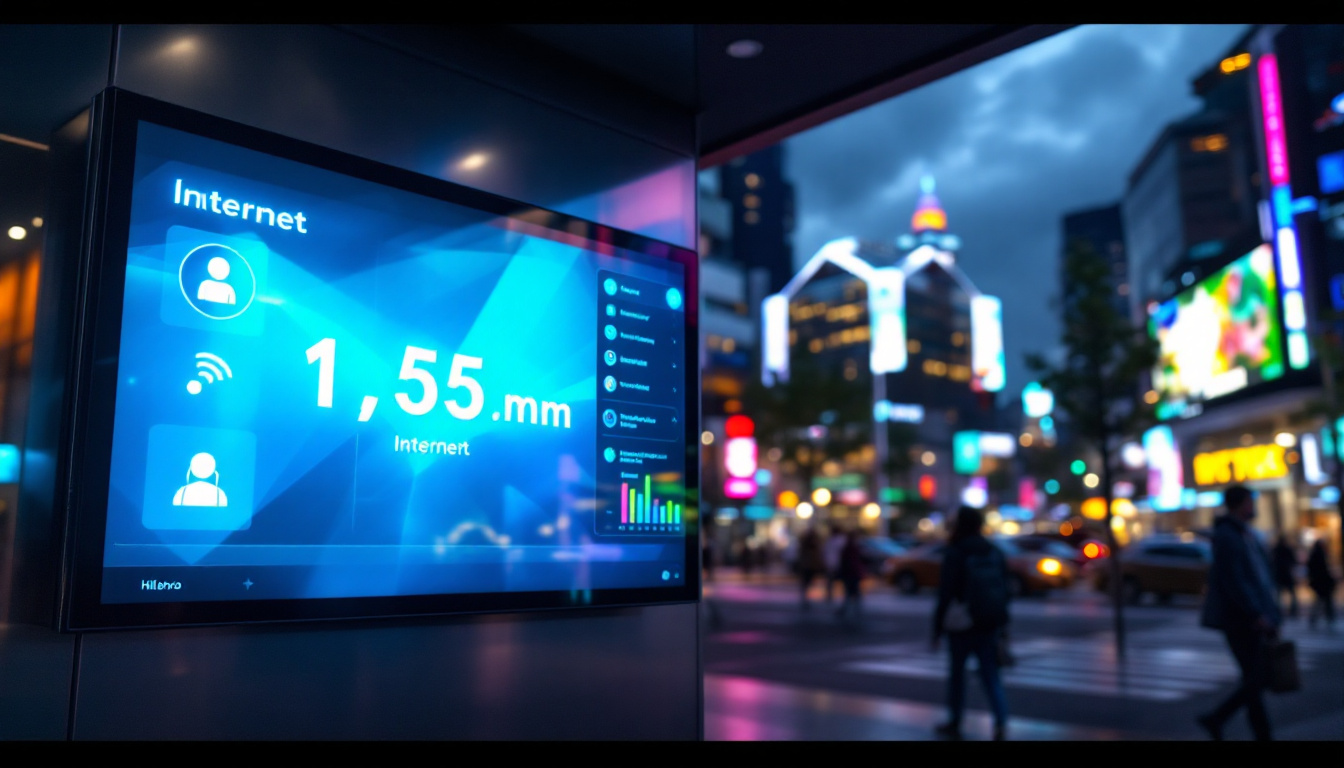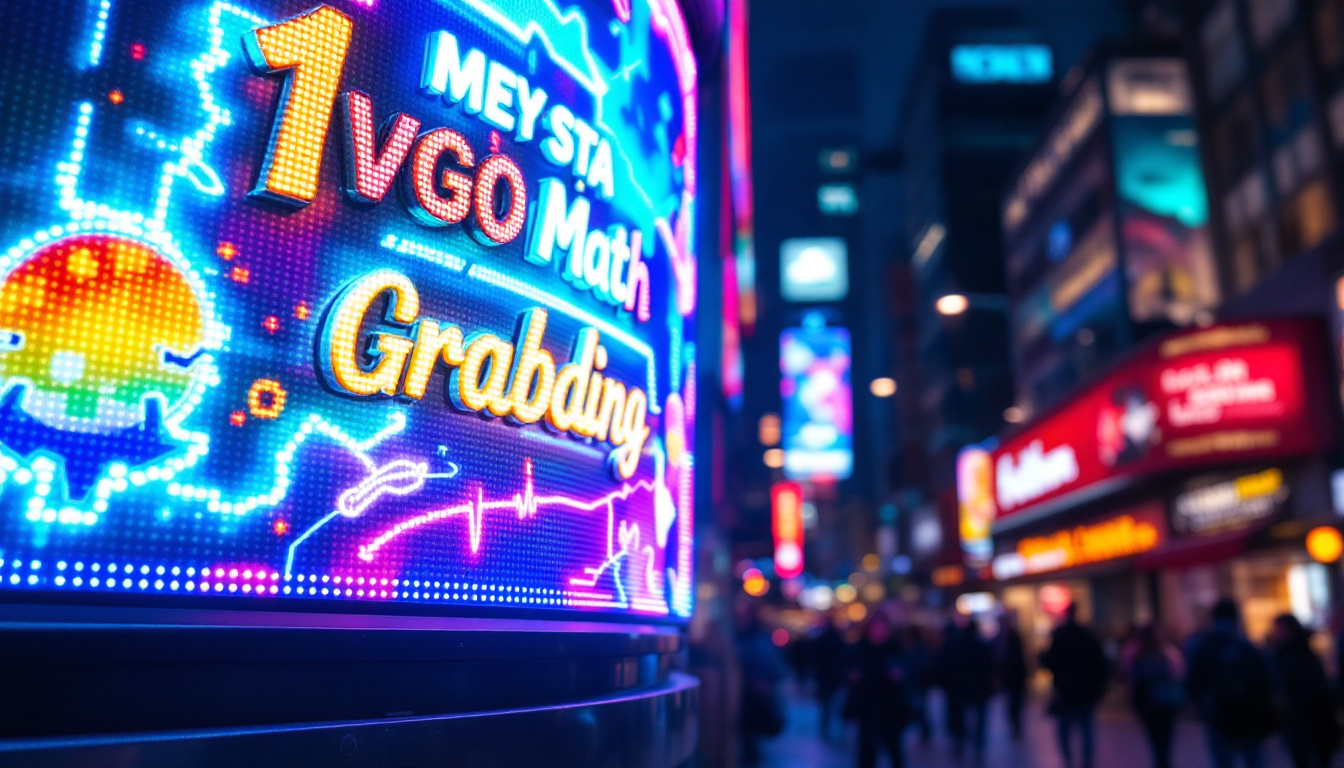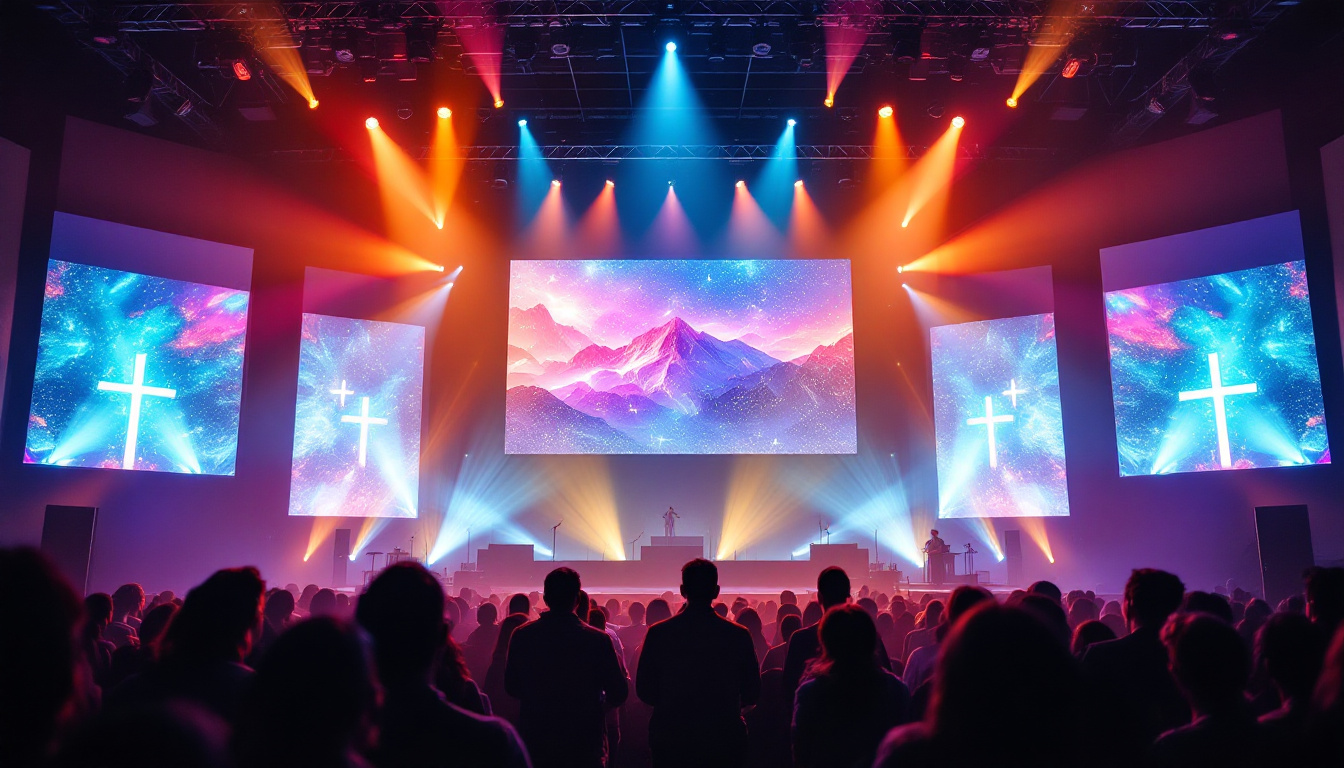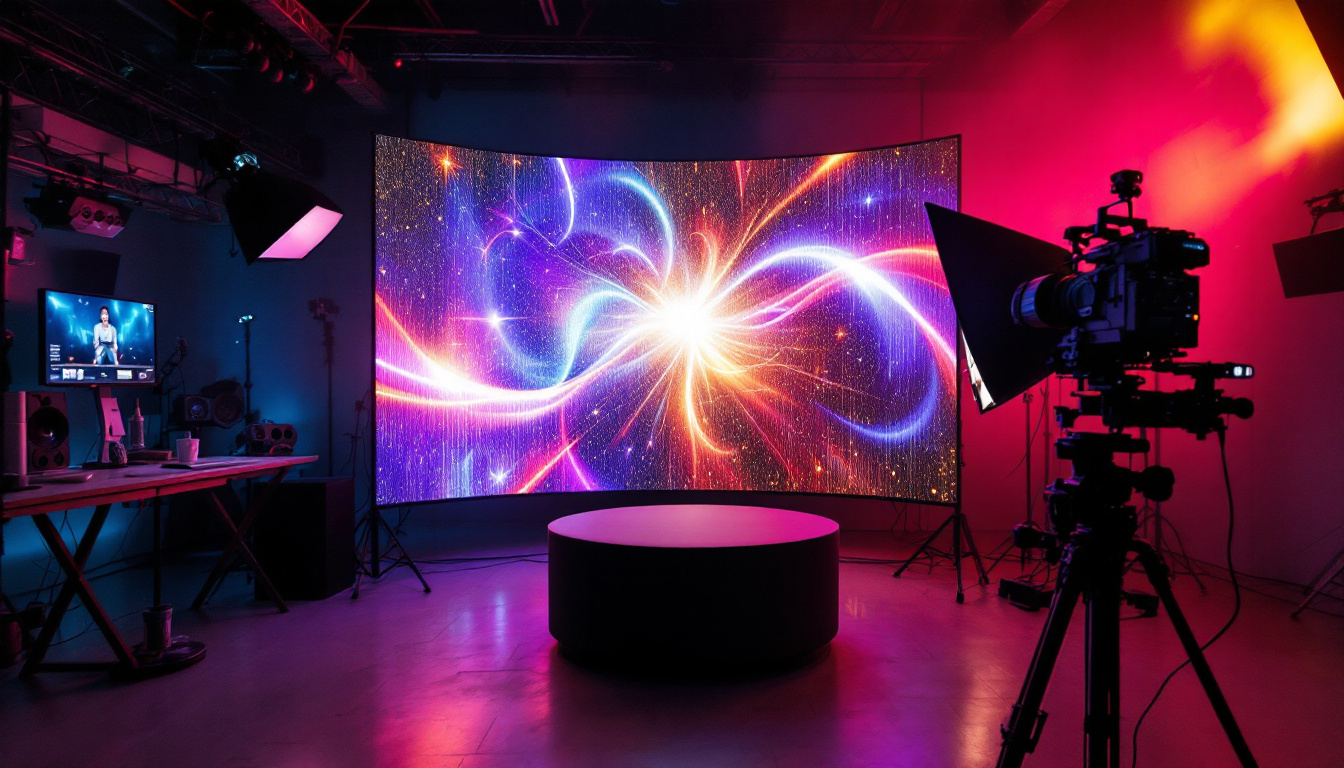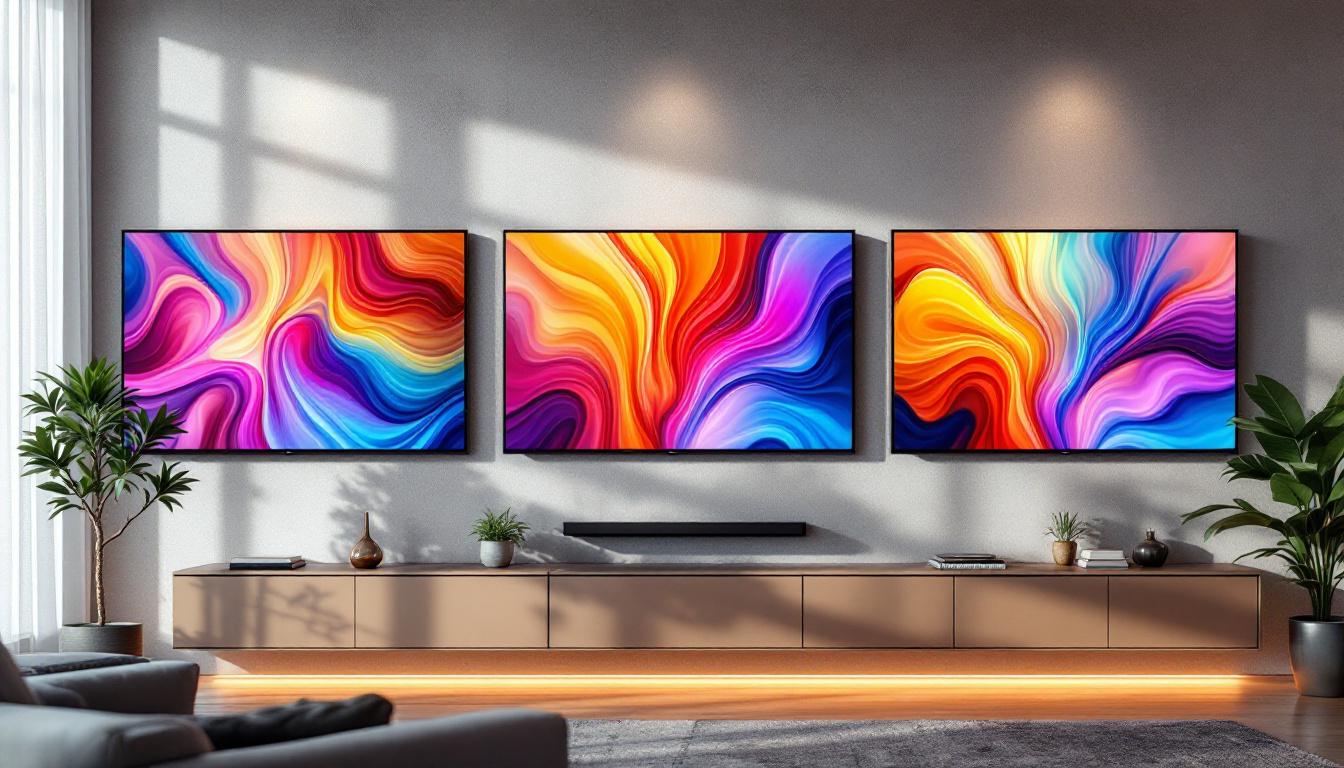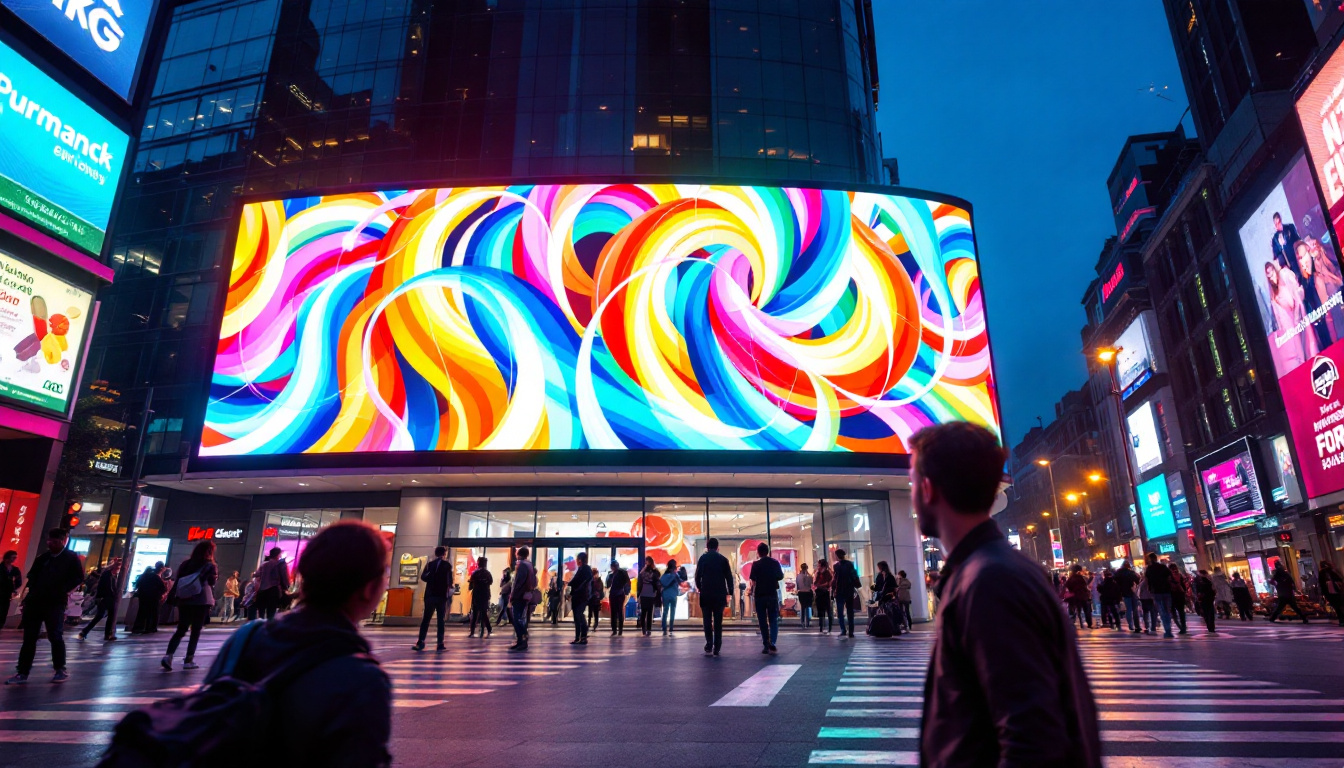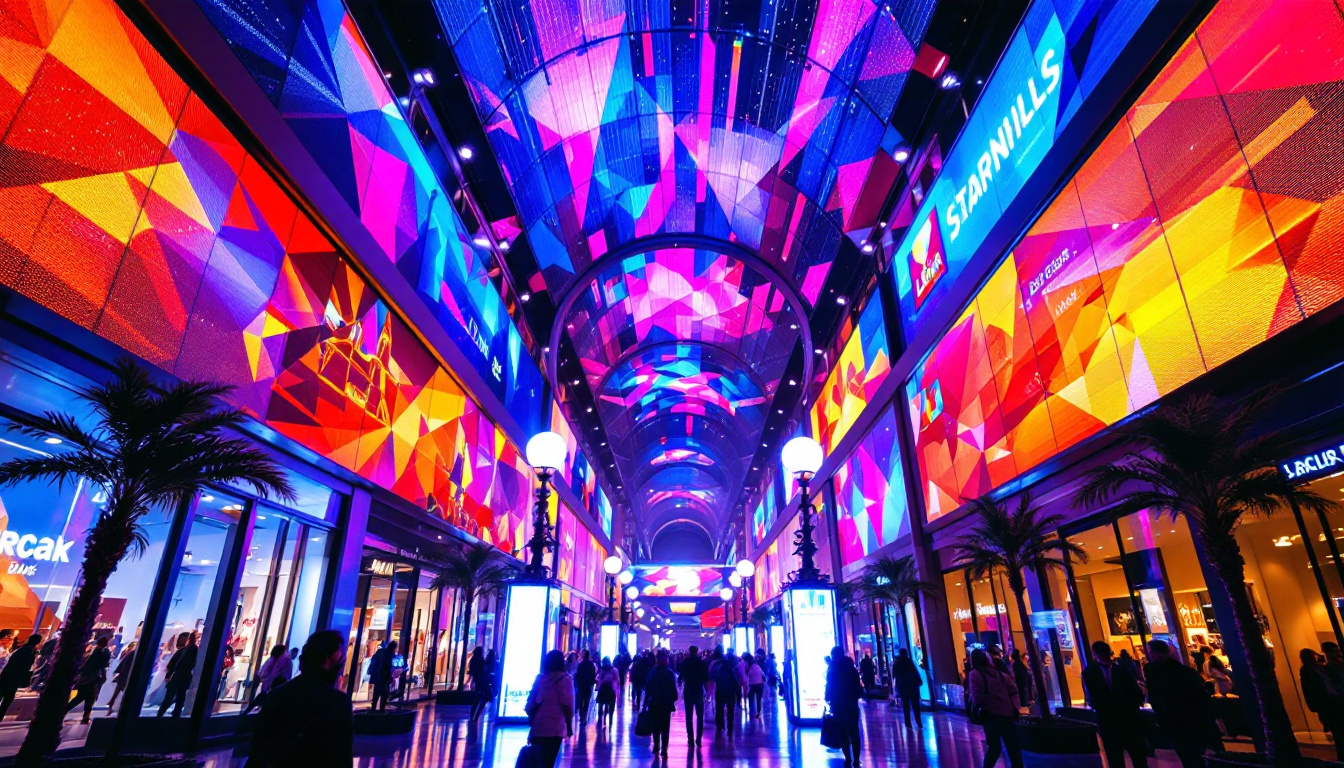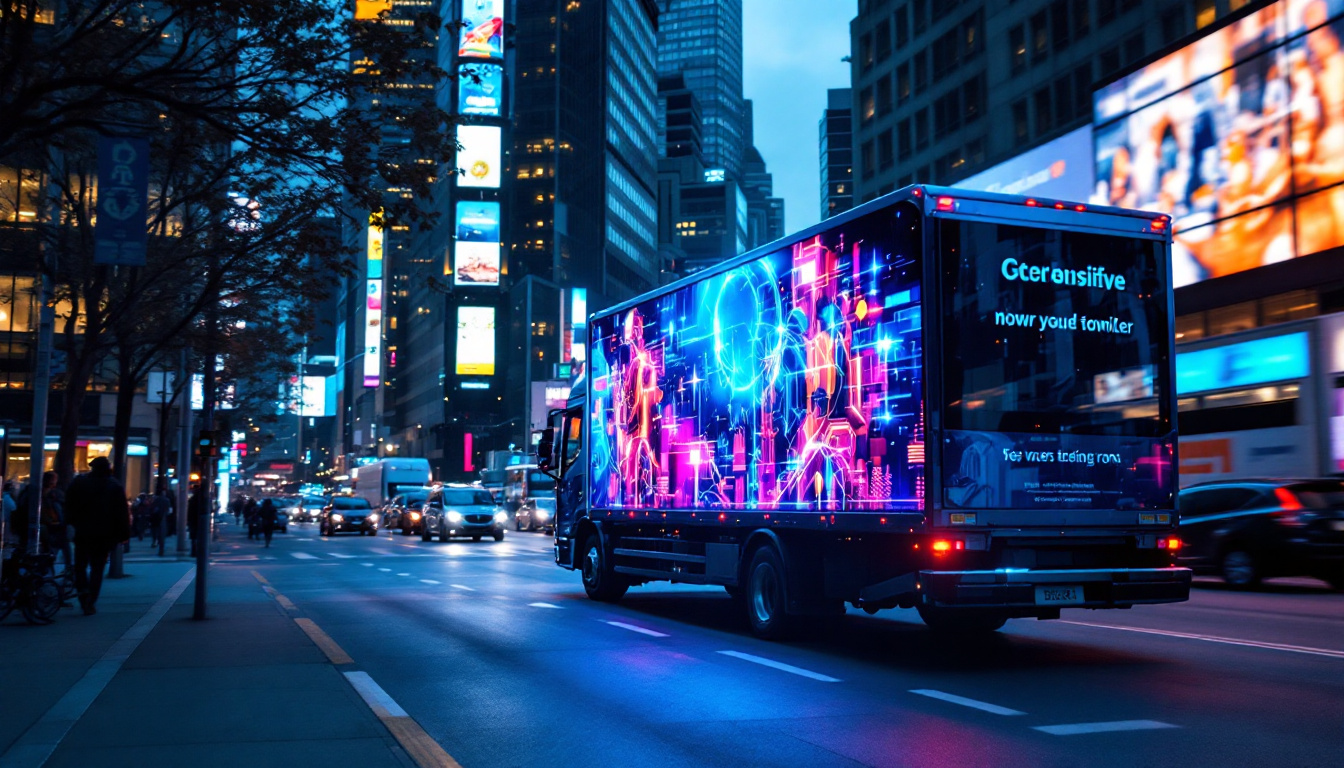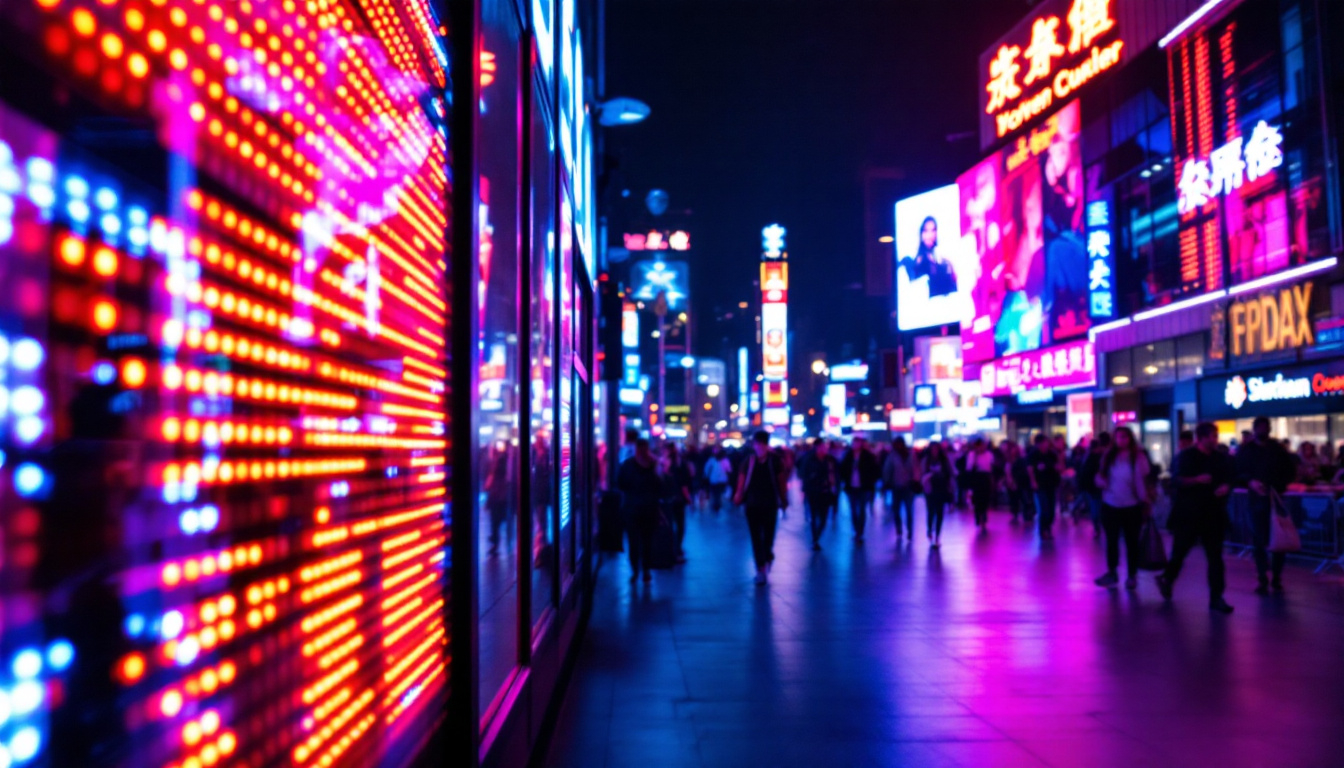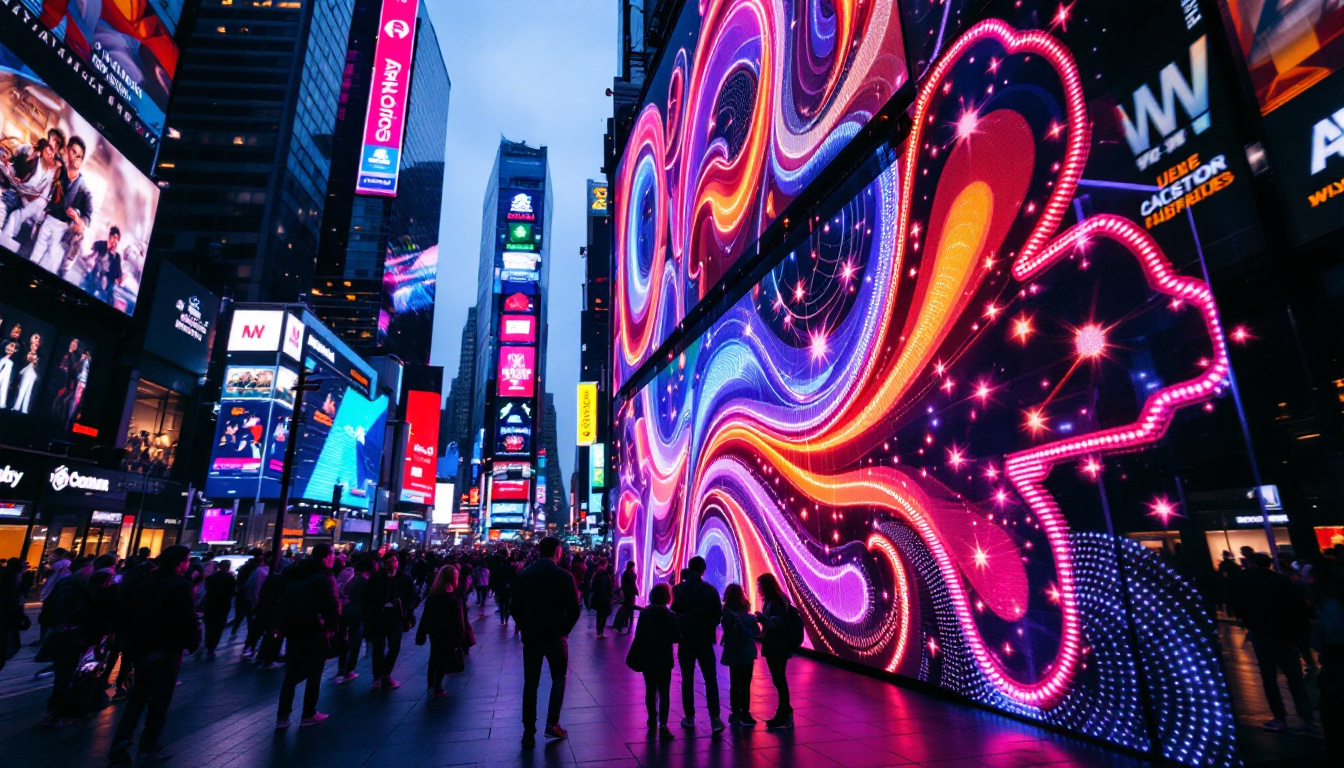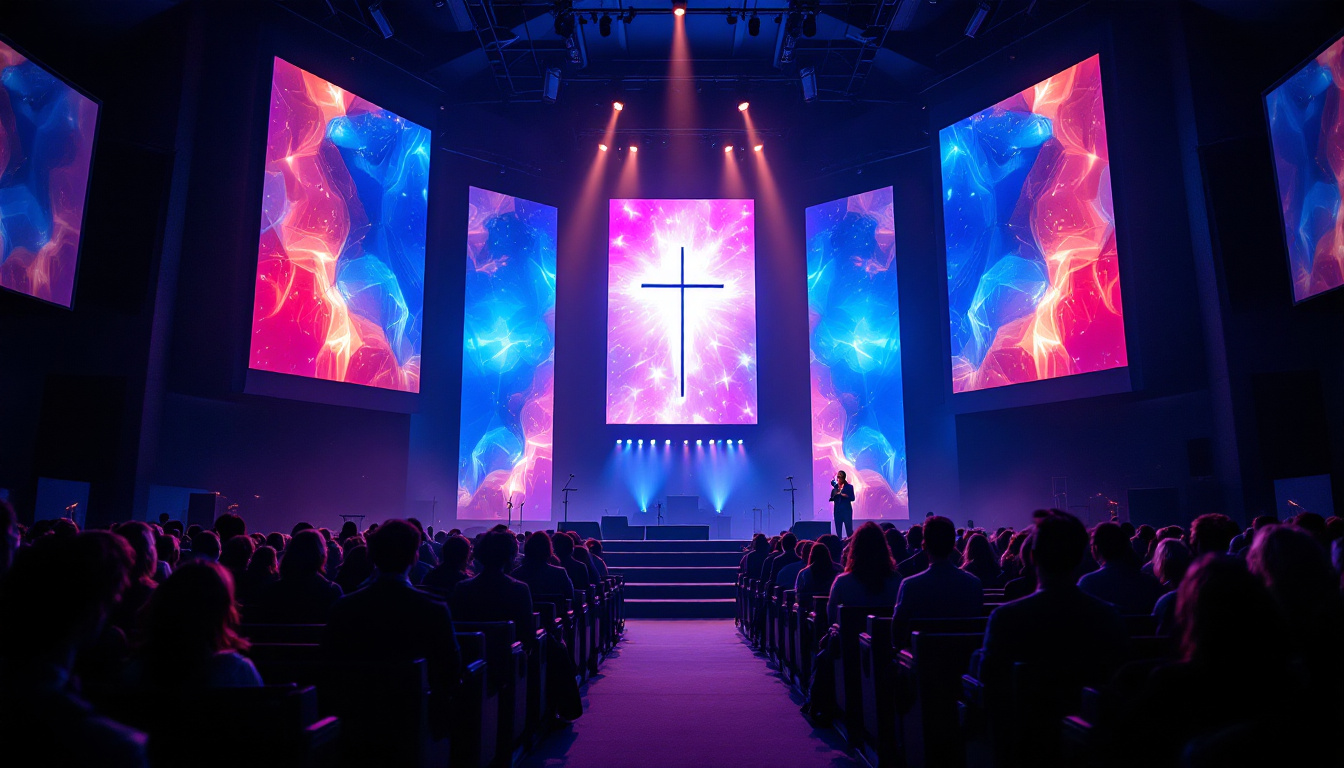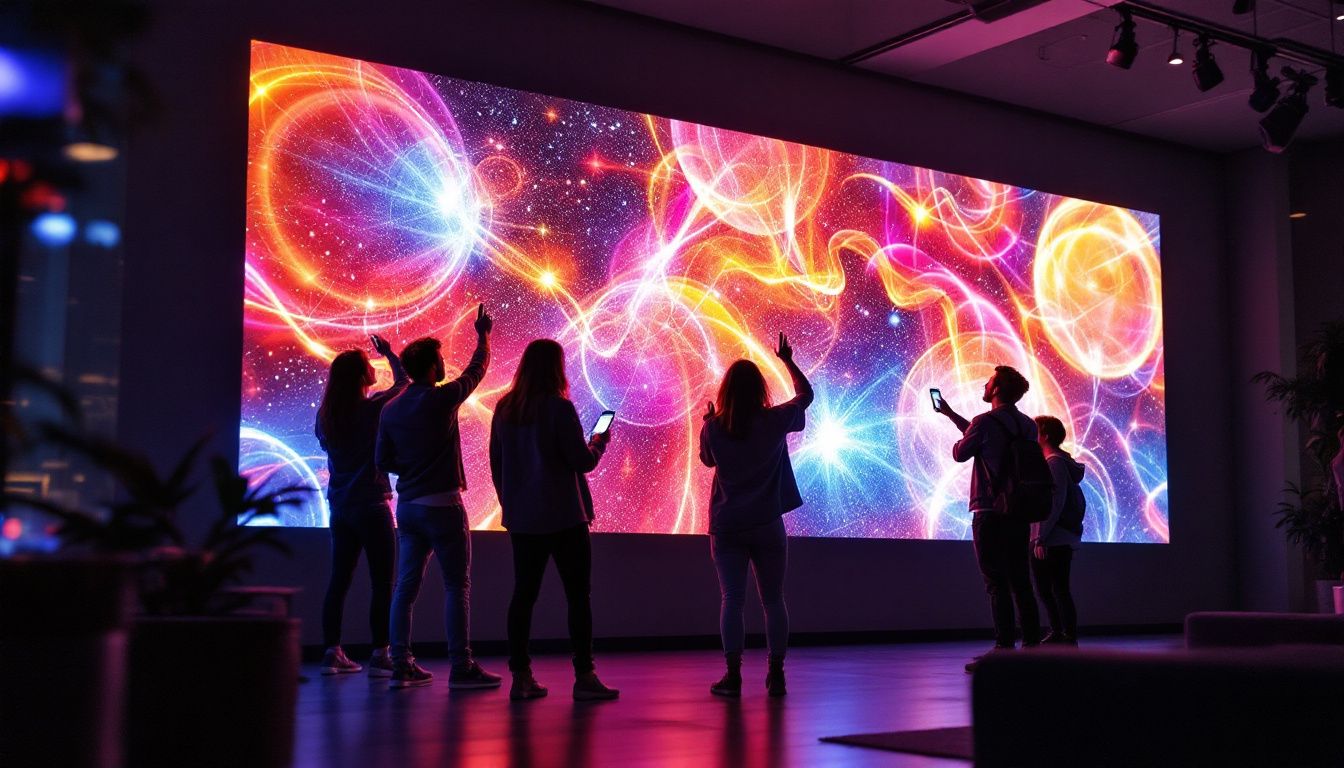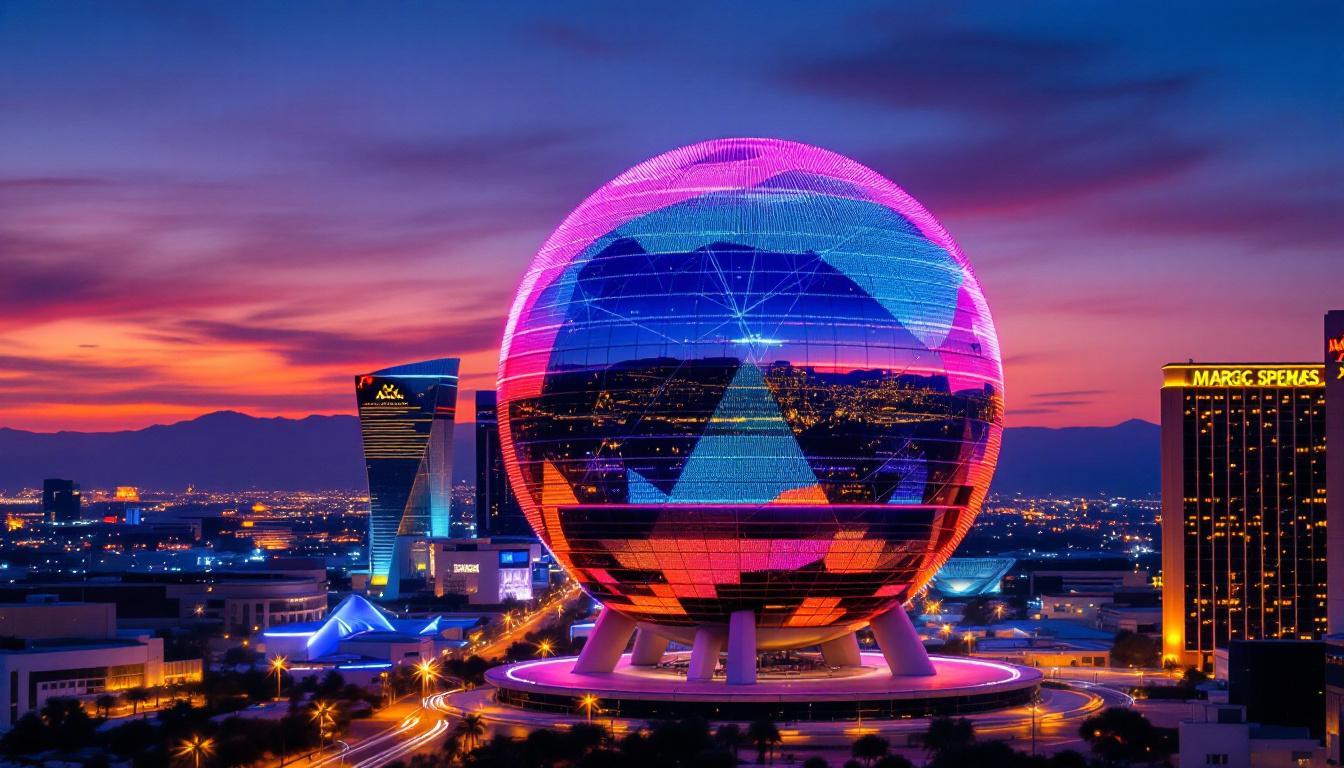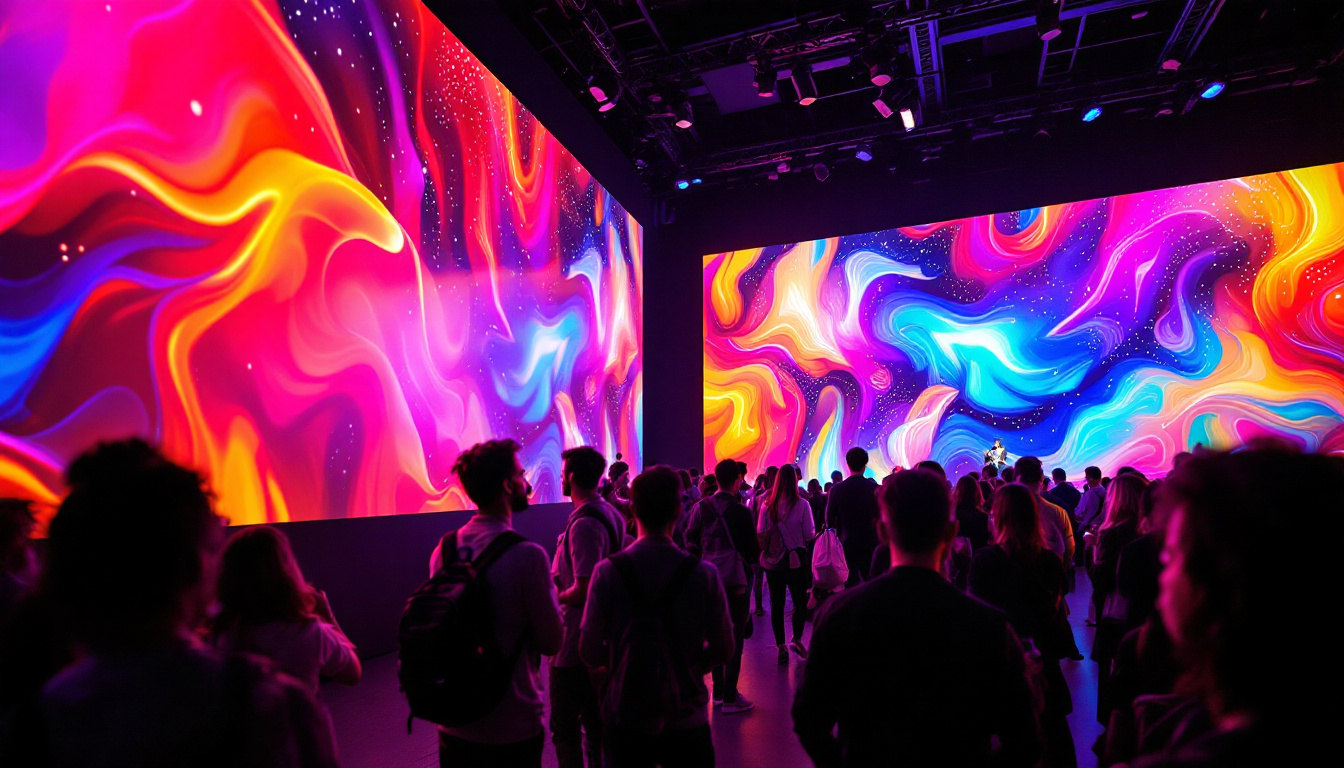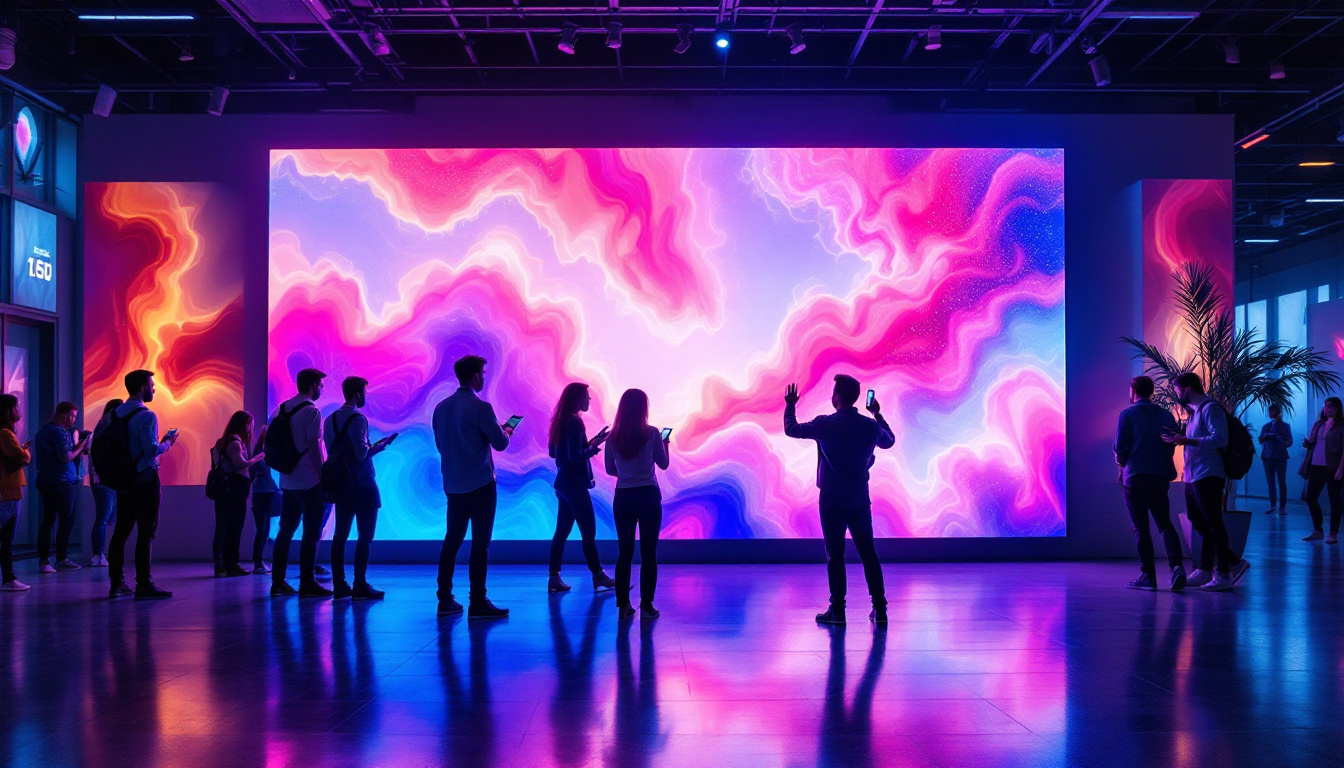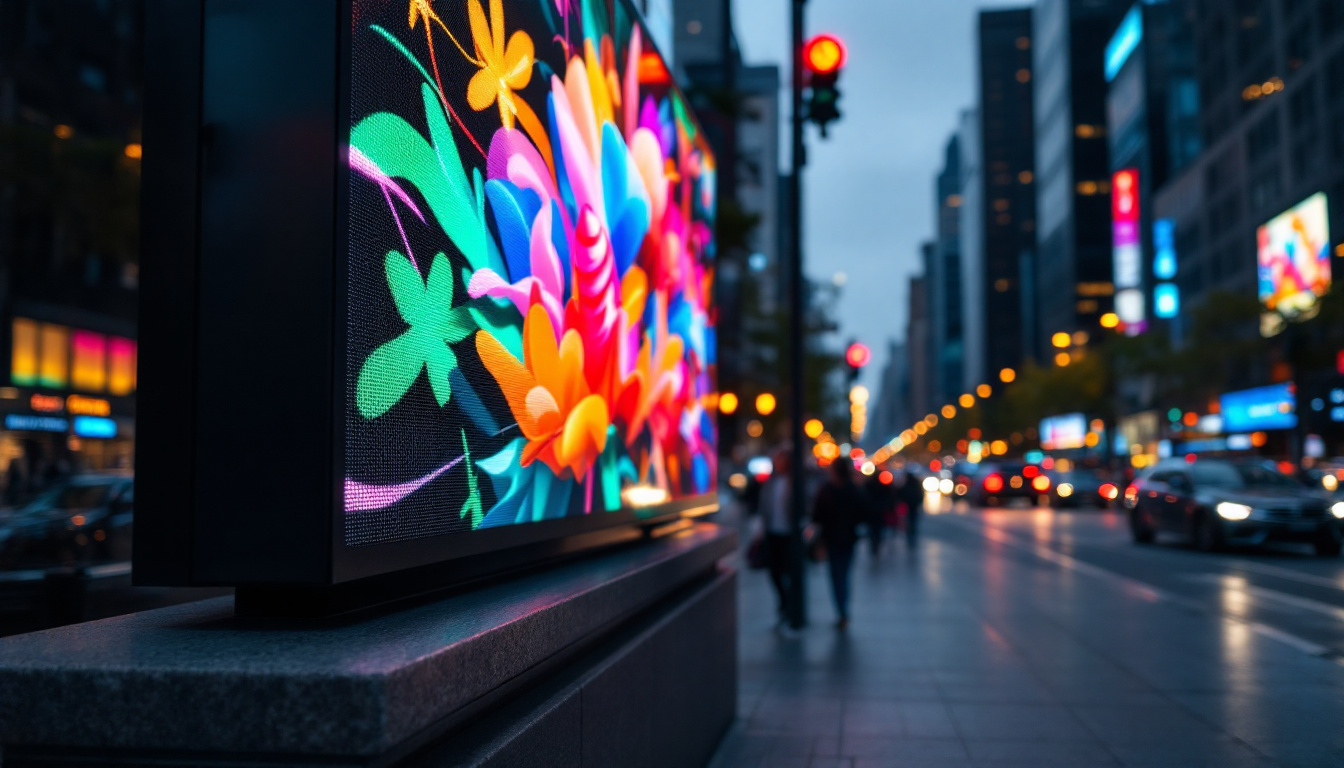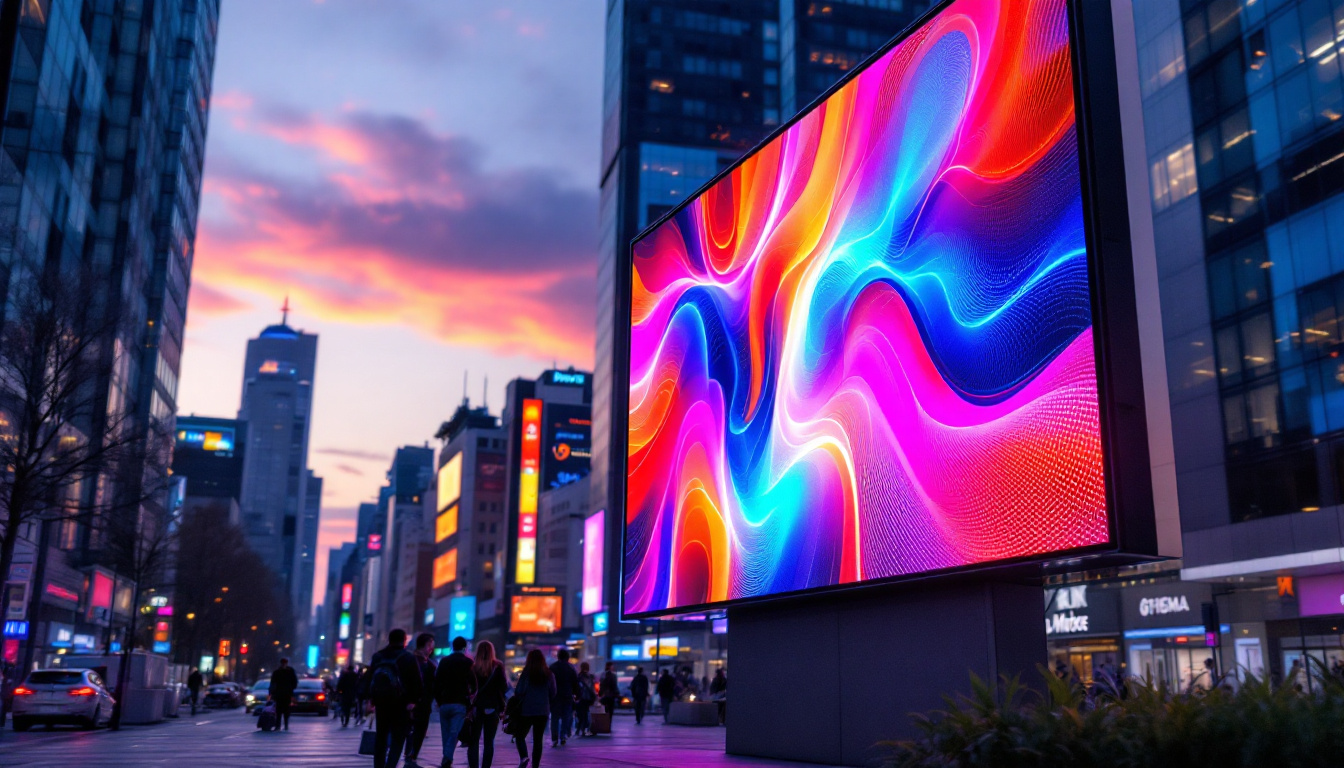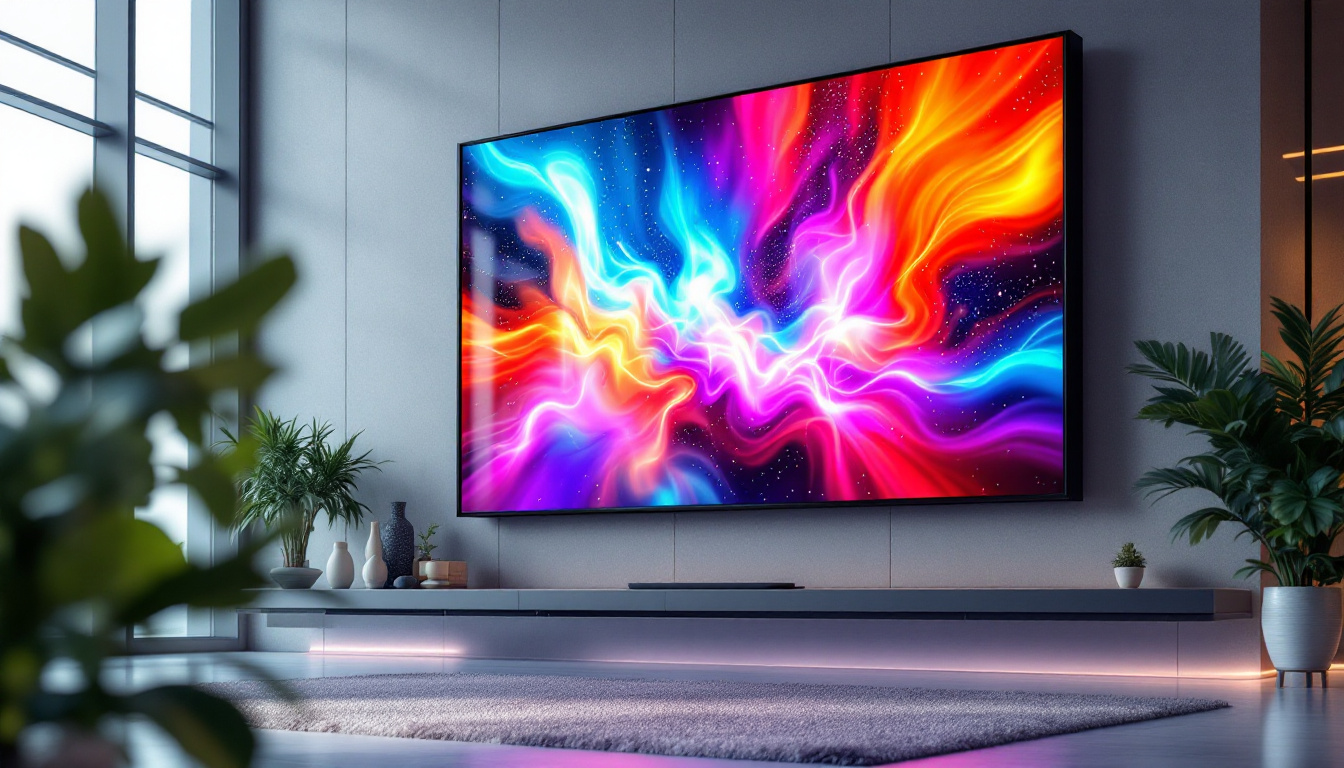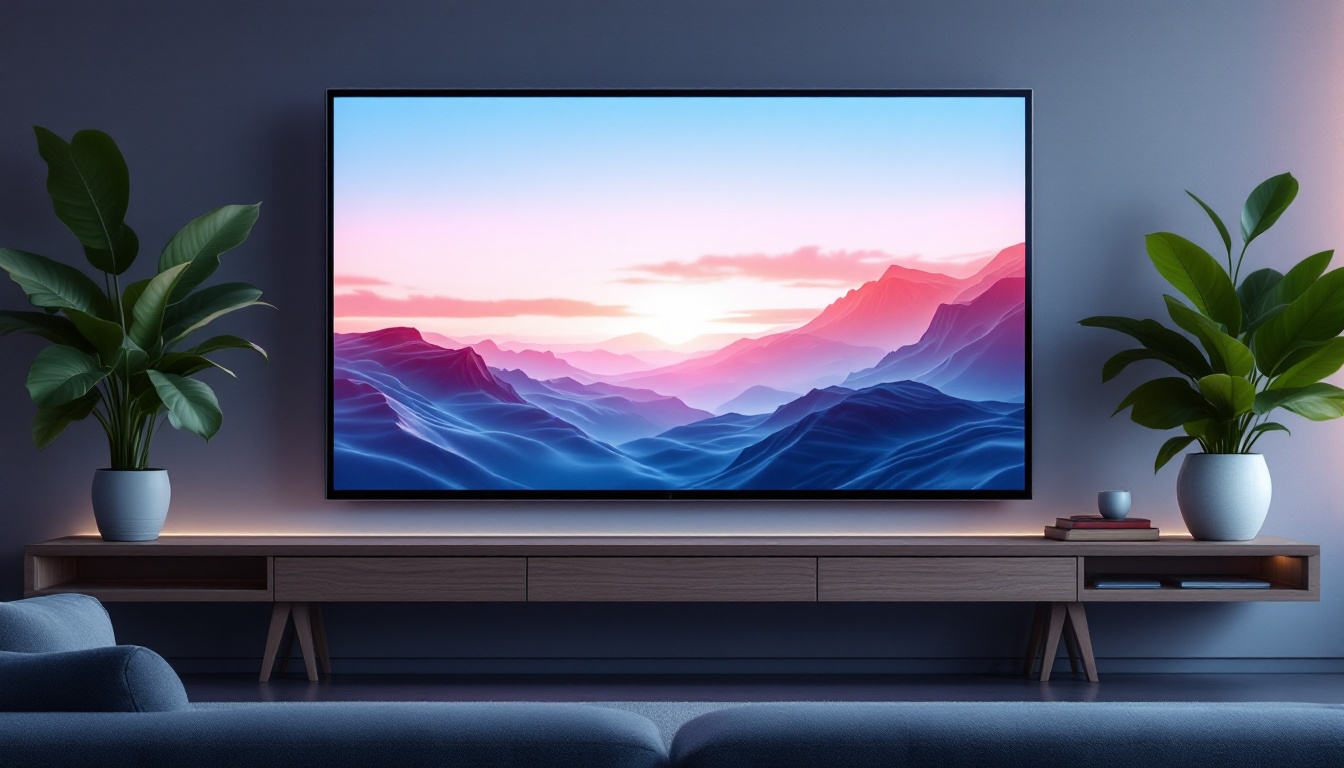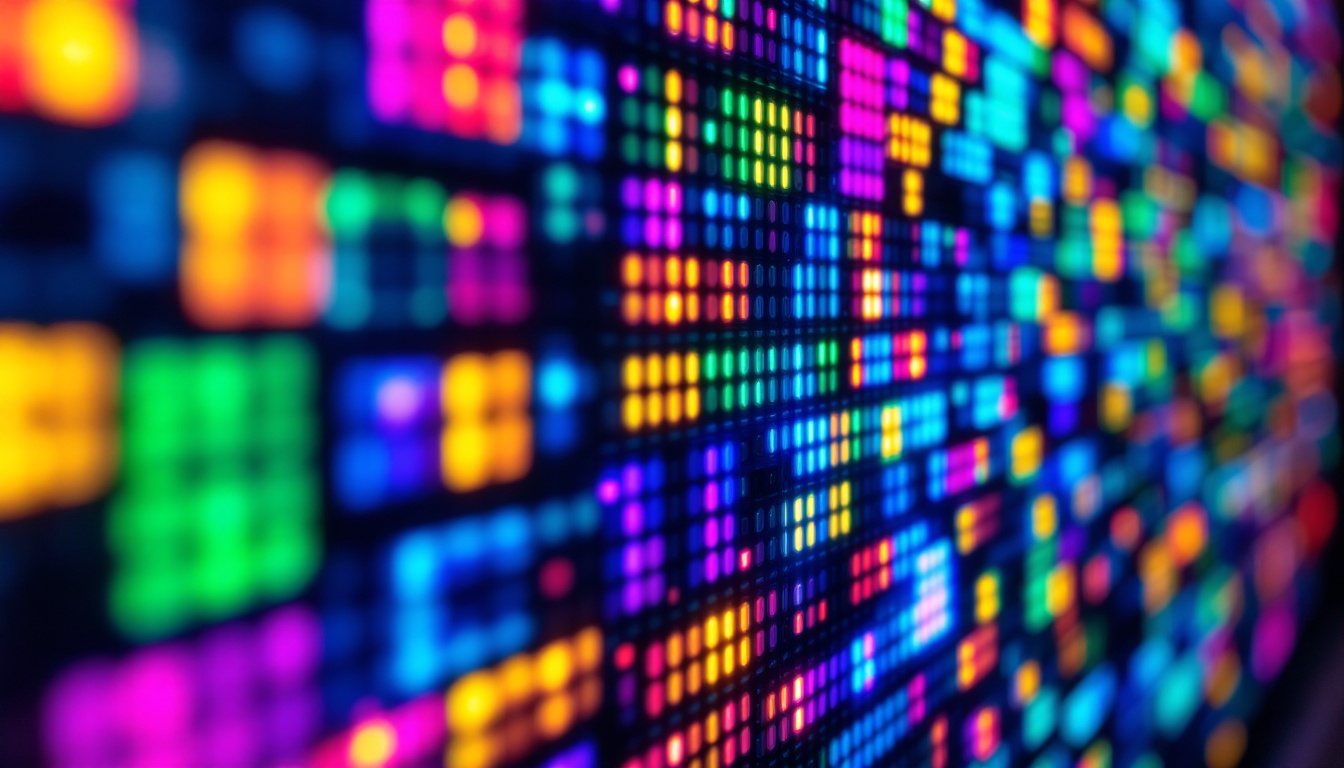In the rapidly evolving world of digital advertising and information dissemination, LED displays have emerged as a cornerstone technology. Their vibrant colors, high resolution, and versatility make them a preferred choice for businesses, event organizers, and public institutions alike. This article delves into the intricacies of LED displays, exploring their technology, applications, advantages, and future trends.
Understanding LED Technology
LED, or Light Emitting Diode, is a semiconductor device that emits light when an electric current passes through it. This technology has transformed the way visual content is displayed, offering numerous advantages over traditional lighting methods. The efficiency of LEDs is remarkable; they consume significantly less energy than incandescent or fluorescent lights, which not only reduces electricity costs but also minimizes environmental impact. Additionally, LEDs have a much longer lifespan, often lasting up to 25 times longer than traditional bulbs, making them a cost-effective and sustainable choice for both consumers and businesses alike.
How LED Displays Work
At the core of an LED display are thousands of tiny LED lights arranged in a grid. Each LED can emit red, green, or blue light, and by varying the intensity of these colors, a full spectrum of colors can be produced. This RGB (Red, Green, Blue) combination allows for the creation of dynamic images and videos, making LED displays particularly effective for advertising and entertainment. The technology behind these displays also includes advanced drivers and controllers that manage the color mixing and brightness levels, ensuring that the visuals remain vibrant and consistent even in varying ambient light conditions.
The pixels in an LED display are typically grouped into modules, which can be easily replaced or repaired. This modular design not only simplifies maintenance but also allows for scalability, enabling businesses to create displays of virtually any size or shape. Furthermore, the ability to control each pixel individually opens up a world of creative possibilities, allowing for intricate animations and effects that can captivate audiences. This flexibility is a key reason why LED displays are becoming increasingly popular in various sectors, from retail to live events.
Types of LED Displays
LED displays can be categorized into several types based on their application and technology. The most common types include:
- Indoor LED Displays: These displays are designed for use in enclosed spaces, such as shopping malls, conference rooms, and theaters. They typically have a higher pixel density, which allows for clearer images viewed from shorter distances. Indoor displays often incorporate features such as high refresh rates to ensure smooth video playback, making them ideal for presentations and entertainment.
- Outdoor LED Displays: Built to withstand harsh weather conditions, outdoor displays are larger and have a lower pixel density. They are often used for billboards, stadiums, and public transportation systems. These displays are engineered with protective coatings and robust housings to resist moisture, dust, and UV radiation, ensuring longevity and reliability in various environmental conditions.
- Transparent LED Displays: These innovative displays allow light to pass through, making them ideal for use in retail environments where visibility of products behind the screen is desired. Transparent displays can create a stunning visual effect, blending digital content with the physical space, and are increasingly being used in storefronts and exhibitions to attract customers while maintaining an open and inviting atmosphere.
Applications of LED Displays
The versatility of LED displays has led to their widespread adoption across various sectors. From advertising to information sharing, their applications are vast and varied.
Advertising and Marketing
One of the most prominent uses of LED displays is in advertising. Businesses leverage these vibrant screens to capture attention and convey messages effectively. LED billboards are particularly effective in high-traffic areas, where they can reach a large audience with dynamic content.
Moreover, the ability to change content in real-time allows marketers to tailor their messages based on time of day, audience demographics, or current events, making advertising campaigns more relevant and impactful. This adaptability not only maximizes engagement but also allows for A/B testing of different advertisements, enabling businesses to refine their strategies based on immediate feedback and performance metrics.
Event Management
In the realm of event management, LED displays play a crucial role in enhancing the attendee experience. From concerts to corporate events, large LED screens are used to project visuals, live feeds, and information, ensuring that every participant remains engaged.
Additionally, LED displays can be configured in various shapes and sizes, allowing for creative setups that enhance the overall aesthetic of an event. This flexibility is particularly advantageous in venues with unique architectural features. For instance, curved LED screens can wrap around stages or be integrated into the environment, creating immersive experiences that captivate audiences. Furthermore, the bright and vivid colors of LED technology ensure that visuals remain sharp and clear, even in outdoor settings during daylight hours.
Public Information Systems
LED displays are increasingly used in public information systems, such as transportation hubs, city squares, and educational institutions. They provide real-time information, such as train schedules, weather updates, and emergency announcements, ensuring that the public remains informed and safe.
These displays can also be integrated with other technologies, such as sensors and cameras, to provide contextual information based on the environment, further enhancing their utility. For example, in smart city applications, LED displays can communicate with traffic management systems to relay information about congestion or accidents, helping to improve the flow of traffic. Additionally, in educational settings, LED screens can be utilized for interactive learning, displaying multimedia content that enriches the curriculum and engages students in a dynamic way.
Advantages of LED Displays
The growing popularity of LED displays can be attributed to their numerous advantages over traditional display technologies. Understanding these benefits can help businesses make informed decisions about their advertising and information-sharing strategies.
Energy Efficiency
One of the most significant advantages of LED technology is its energy efficiency. LED displays consume significantly less power compared to traditional display technologies, such as LCD or projection systems. This not only reduces operational costs but also minimizes the environmental impact, making LED displays a more sustainable choice.
Longevity and Durability
LED displays are known for their long lifespan, often exceeding 100,000 hours of operation. This durability is especially beneficial for outdoor displays, which are subjected to varying weather conditions. The robust nature of LEDs means that they are less prone to damage, reducing maintenance costs and downtime.
High Brightness and Visibility
LED displays offer superior brightness levels, making them easily viewable in bright sunlight. This is particularly important for outdoor advertising, where visibility can be a challenge. The high contrast ratios and vibrant colors of LED displays ensure that messages remain clear and impactful, regardless of the viewing conditions.
Challenges and Considerations
While LED displays offer numerous advantages, there are also challenges and considerations that businesses must take into account when implementing this technology.
Initial Investment Costs
The initial investment for LED displays can be substantial, especially for large-scale installations. Businesses must weigh the upfront costs against the long-term savings and benefits that LED technology can provide. It is essential to conduct a thorough cost-benefit analysis to determine the feasibility of such an investment.
Content Management
Another challenge associated with LED displays is content management. To maximize the effectiveness of an LED display, businesses must regularly update and manage the content being displayed. This requires a dedicated team and the right software tools to ensure that the content is engaging and relevant.
Technological Advancements
The rapid pace of technological advancements in the LED display industry means that businesses must stay informed about the latest developments. New features, such as improved resolution, enhanced color accuracy, and advanced interactivity, are continually being introduced. Companies must be prepared to adapt and upgrade their systems to remain competitive.
Future Trends in LED Displays
The future of LED displays looks promising, with several trends emerging that are likely to shape the industry in the coming years.
Integration with Smart Technologies
As the Internet of Things (IoT) continues to expand, the integration of LED displays with smart technologies is becoming increasingly common. This allows for real-time data sharing and interactivity, enabling businesses to create personalized experiences for their audiences. For example, smart LED displays can adjust their content based on viewer demographics or environmental factors.
Advancements in Display Technology
Ongoing research and development in display technology are leading to advancements such as microLED and OLED displays. These technologies promise even higher resolution, better color accuracy, and greater energy efficiency. As these innovations become commercially viable, they are expected to further enhance the capabilities of LED displays.
Increased Focus on Sustainability
As environmental concerns continue to rise, there is a growing emphasis on sustainability within the LED display industry. Manufacturers are increasingly focusing on eco-friendly materials and production processes, as well as developing energy-efficient solutions. This trend will likely influence purchasing decisions, as businesses seek to align with sustainable practices.
Conclusion
LED displays have revolutionized the way information is shared and advertisements are presented. Their vibrant colors, energy efficiency, and versatility make them an invaluable tool for businesses across various sectors. While there are challenges to consider, the benefits and future potential of LED technology far outweigh the drawbacks.
As technology continues to advance, LED displays are expected to become even more integrated into our daily lives, offering innovative solutions for communication and engagement. For businesses looking to enhance their visibility and connect with their audiences, investing in LED display technology is a step towards a brighter, more dynamic future.
Illuminate Your Message with LumenMatrix
Ready to elevate your visual communication and advertising strategy? Discover how LumenMatrix’s innovative LED display solutions can transform your space and captivate your audience. From the vibrant Indoor LED Wall Display to the robust Outdoor LED Wall Display, and from the dynamic Vehicle LED Display to the sleek LED Poster Display, our range of products is designed to meet your unique needs. Experience the future of digital signage with our LED Sports Display, Floor LED Display, Custom LED Display, All-in-One LED Display, and LED Transparent Display. Embrace the power of cutting-edge technology and make a lasting impression. Check out LumenMatrix LED Display Solutions today and join the revolution in visual communication.

